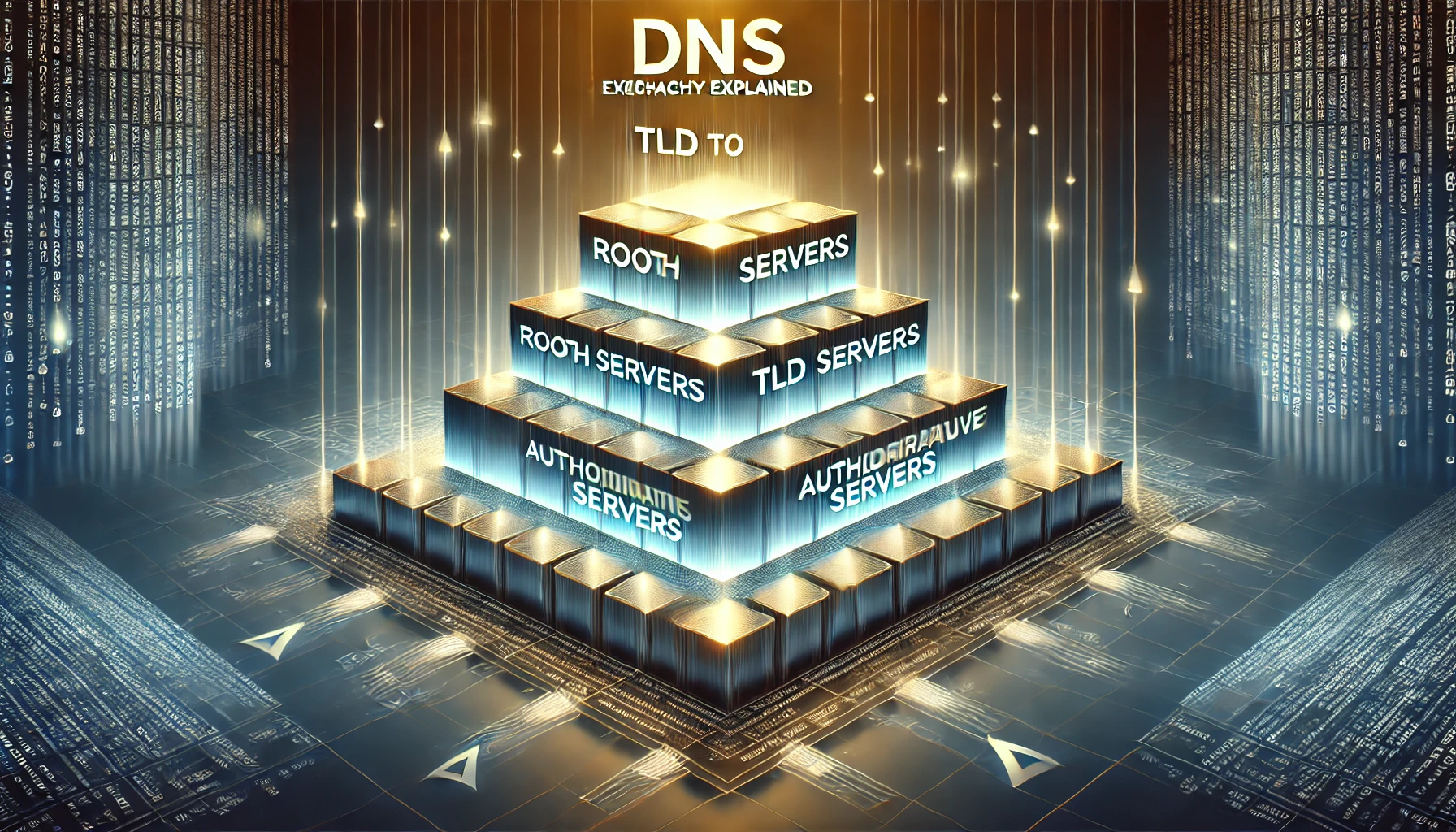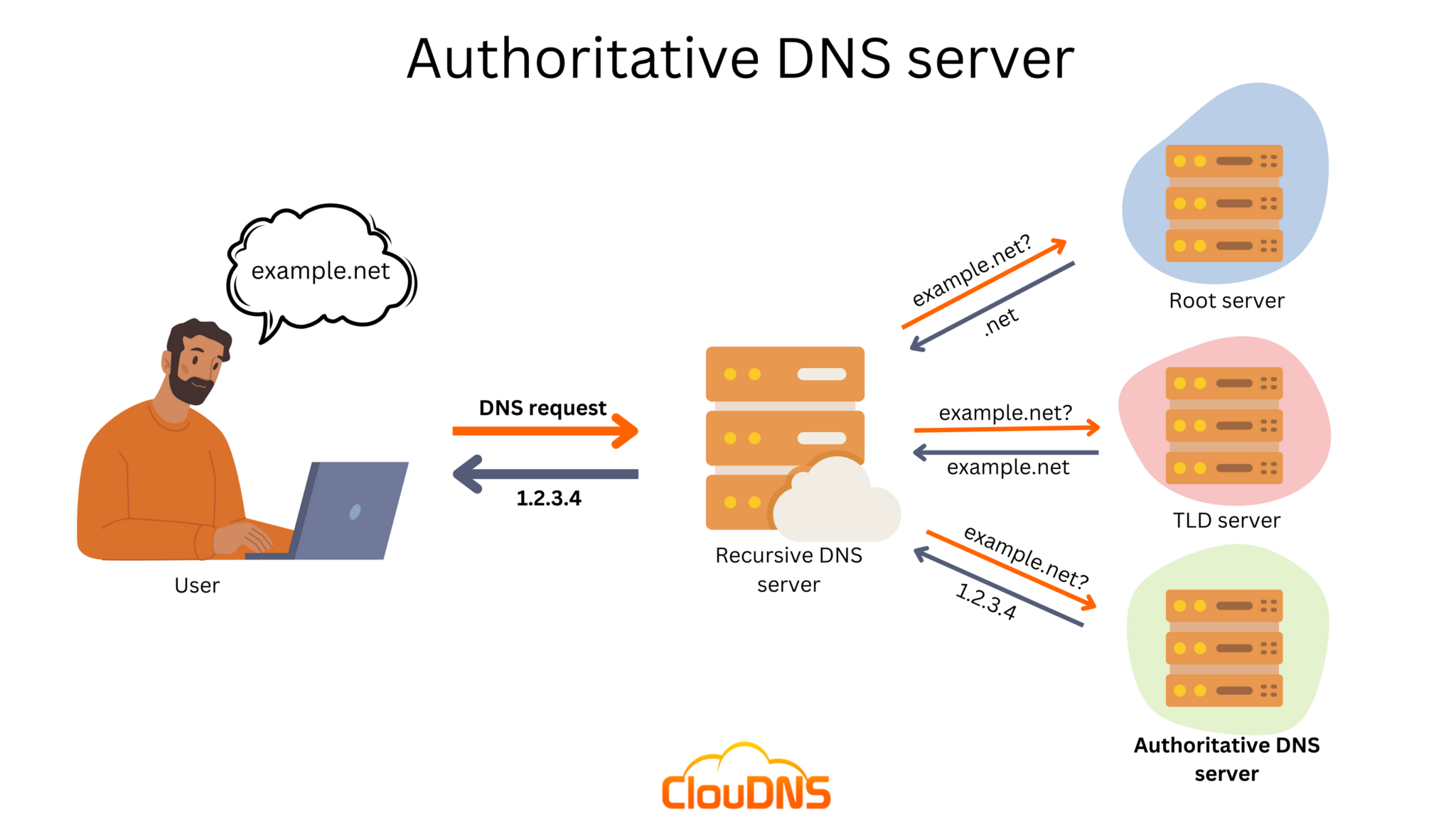DNS Hierarchy Explained: Root to Authoritative Servers
 Nilesh Kurrey
Nilesh Kurrey
Have you ever thought about how typing a simple web address like www.example.com quickly takes you to a website? Behind the scenes, there's a complex system called the Domain Name System (DNS) making it all happen. This article takes you on a journey into the fascinating world of DNS, explaining how it translates easy-to-remember names into machine-friendly IP addresses, its layered structure, and why it's so crucial for keeping the internet running smoothly.
The Domain Name System (DNS) is a key part of the Internet, making sure everything connects and works smoothly. In this article, we'll dive into the basics of DNS, its layered structure, how it handles requests, and the challenges it faces. By the end, you'll see why DNS is so essential to the modern web.
Introduction to DNS and Its Importance
What is DNS
The Domain Name System (DNS) is like the internet's address book. It turns easy-to-remember domain names (like www.example.com) into IP addresses (like 192.0.2.1) that computers use to find each other on the network. This makes it way easier for us to use the internet because we don't have to remember those complicated number sequences. So, instead of typing "192.0.2.1" to visit a site, we just type "www.example.com." DNS is the bridge between the names we know and the addresses computers understand, making sure everything runs smoothly.

Why is DNS Critical for the Internet?
Without DNS, users would need to memorize complex IP addresses to access websites, such as "172.217.14.206" for Google or "151.101.129.69" for Wikipedia. This would make the internet far less accessible and user-friendly, as remembering these numerical sequences for every website would be impractical. DNS ensures seamless navigation and connectivity across the web.
Understanding the DNS Hierarchy
The Domain Name System (DNS) is like the internet's backbone, letting us visit websites using easy-to-remember domain names instead of tricky numerical IP addresses. The DNS hierarchy is a well-organized system that makes sure domain names are resolved efficiently, helping users connect to the right online resources without a hitch.
Overview of the DNS Structure
The Domain Name System (DNS) hierarchy is a worldwide, scalable setup that turns domain names into IP addresses. Think of it like a tree with different layers, each playing a part in sorting out where your internet requests need to go. This setup makes sure that DNS queries are handled quickly and smoothly, no matter where they come from.
At the very top, you've got the root servers, which are the starting point for all DNS queries. Just below them are the Top-Level Domain (TLD) servers, which take care of domains like .com, .org, and .edu. Going further down, you find the Second-Level Domains (SLDs) and Authoritative DNS Servers, which hold the specific records needed to send internet traffic to the right place.
This organized system helps the DNS handle billions of queries every day, keeping things reliable and fast while avoiding slowdowns.
Key Components of the Hierarchy
Root Servers:
Root servers are the backbone of the DNS setup. They don't keep specific domain info but instead direct you to the right TLD servers. There are 13 root server clusters around the world, spread out across different spots using anycast tech to handle global traffic smoothly.TLD Servers:
These guys manage domains based on their endings, like.com,.net, or country codes like.in. They help direct queries to the right Second-Level Domain (SLD) servers.Second-Level Domains (SLDs):
SLDs are the unique domain names you register under a TLD, likeexampleinexample.com. They're usually connected to hosting providers or registrars that take care of their DNS records.
- Authoritative DNS Servers:
These servers have the official DNS records for a domain, like A records (IP addresses), MX records (mail servers), and CNAME records (aliases). They give the final answer to DNS queries, making sure you get to the right website or service.

Layers of the DNS Hierarchy
Root Servers: The Foundation
Root servers are the backbone of the DNS system. Even though there are only 13 root server clusters around the globe, each cluster is spread across many locations using anycast routing. This setup ensures there's backup and smooth handling of global traffic. These servers kick off DNS queries by directing them to the right TLD servers based on the domain name you're looking for. Organizations like ICANN take care of these root servers to keep the DNS system stable and running well.
Top-Level Domain (TLD) Servers
TLD servers manage domains by their extensions (e.g., .com, .edu, .org). They serve as intermediaries between root servers and second-level domain servers, directing queries to the appropriate SLD servers. Each TLD server is accountable for a specific set of domains, guaranteeing efficient resolution within its scope.
Second-Level Domains (SLDs)
SLDs are unique domain names registered under a TLD (e.g., "example" in example.com). These domains are managed by registrars and often represent businesses, organizations, or individuals. SLDs are crucial in creating memorable and user-friendly web addresses.
Authoritative DNS Servers
Authoritative servers store and provide definitive answers for domain records, such as A, CNAME, and MX records. They ensure that users reach the correct destination by delivering accurate information about a domain's IP address or mail server. Without authoritative servers, the DNS system would lack the precision needed to direct internet traffic effectively.

How DNS Queries Work
Recursive vs. Iterative Queries
Recursive Queries: A DNS resolver handles the entire resolution process for the client. It queries multiple DNS servers until it finds the authoritative answer and then returns it to the user.
Iterative Queries: The DNS resolver queries each layer of the DNS hierarchy step-by-step. Each server provides a referral to the next layer, guiding the resolver closer to the authoritative server, instead of fetching the final answer.
Step-by-Step Resolution Process
User Request: A user enters a domain name (e.g., www.example.com) into their browser.
Query to Resolver: The browser sends the request to a DNS resolver, often provided by the user’s Internet Service Provider (ISP).
Root Server Contact: The resolver queries a root server to identify the TLD server responsible for the domain’s extension (e.g., .com).
TLD Server Contact: The root server directs the resolver to the appropriate TLD server.
SLD and Authoritative Server: The TLD server points the resolver to the authoritative DNS server for the specific domain.
Final Answer: The authoritative server provides the IP address of the domain, completing the query process.
Website Access: The resolver returns the IP address to the browser, enabling the user to access the website.

DNS Challenges and Security
Common Issues in DNS (Latency, Spoofing)
The DNS system, while efficient, does have a few challenges:
Latency: Sometimes, DNS queries can be slow, affecting how quickly you can access websites. This can happen if servers are too busy or far away from you.
Spoofing: DNS spoofing, also known as cache poisoning, is when bad actors mess with DNS records to send you to fake websites. This can lead to data theft or phishing attacks, which is definitely something we want to avoid!
Solutions: DNSSEC and Encryption
To address these challenges, the following solutions are implemented:
DNSSEC (Domain Name System Security Extensions): DNSSEC enhances DNS security by incorporating digital signatures into DNS records. These signatures verify that the data received by users is authentic and has not been altered during transmission.
Encryption: Protocols such as DNS over HTTPS (DoH) and DNS over TLS (DoT) encrypt DNS queries, preventing eavesdropping and ensuring user privacy. These technologies make it challenging for attackers to intercept or modify DNS requests.
Subscribe to my newsletter
Read articles from Nilesh Kurrey directly inside your inbox. Subscribe to the newsletter, and don't miss out.
Written by
